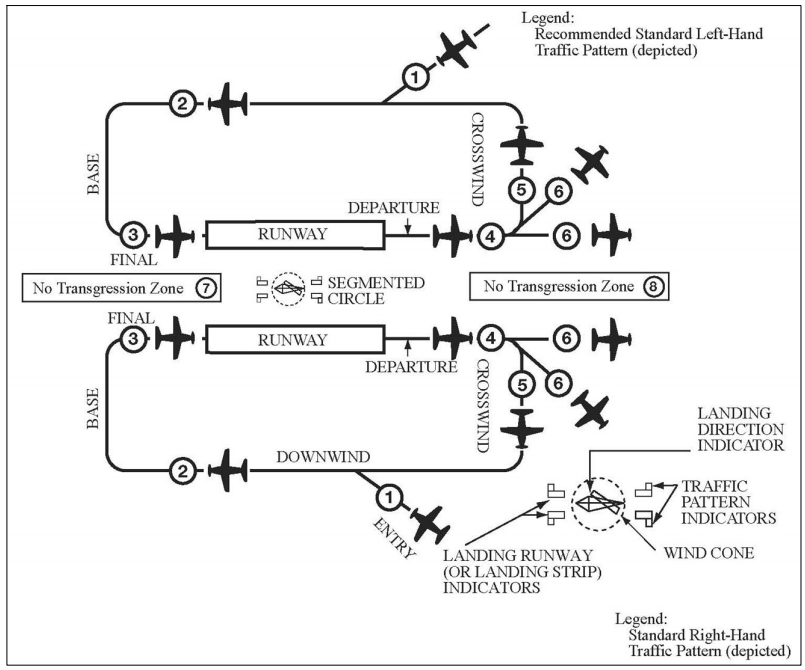Landings
Normal Landings
- Team traffic patterns and stabilized approaches first
- Minimal control inputs when on glidepath
- Psychomotor skill, takes time to develop
- Practice with minimal wind
- Landing may take upwards of 15 hours and 150 landings to become proficient
With the traffic pattern

- Turn crosswind 300' below pattern altitude
- 1/2 mile base leg from the runway
- Apply wind correction angle
- "Key point" -- abeam the touchdown point, reduce power
- Often first notch of flaps are put down at the key point
- 45 degrees to the runway, turn base
- Judge your height based on the cowling
- When runway is 10 degrees ahead of the wing, turn final
- Try to align front of the runway with back of the runway
- Look at the rate at which the runway is rotating
- Judge the glidepath based on the position of the runway in the windscreen
- As you get closer to the runway, more detail will resolve
- The runway "expansion", where the runway expands in your field of view, is the flare point
- Flare to the nose just below (4 fingers) below the horizon
- Put the centerline right under your seat
- Crosswind landings
- Keep the fuselage parallel with the runway with the rudder
- Use aileron to account for drift from the centerline
- For gusty winds, add 1/2 of the gust factor (how much more is it gusting) to the approach speed
Short Field Landing
Landing an airplane in the shortest distance possible.
Operation
- Visualize an obstruction prior to the runway
- Pick a touchdown point
- Fly the approach at recommended short-field landing speed, or
- Don't land with the brakes applied, which may cause a burst tire
- Short-field landings are often firm, and can be hard on the airplane
Soft Field Landing
Landing an airplane on the wheels as gently as possible, such that the tires wouldn't dig into soft soil.
Operation
- During flare, hold the nose off to slow the decent rate
- Add a little throttle to get the gear to touch down gentle